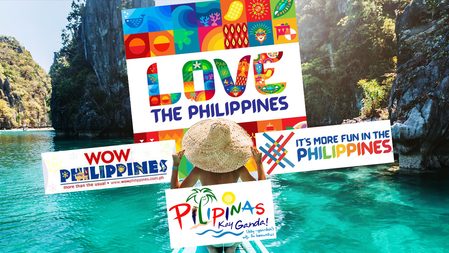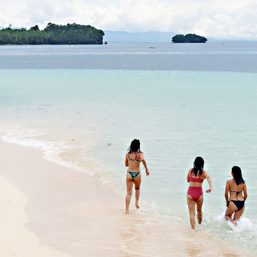SUMMARY
This is AI generated summarization, which may have errors. For context, always refer to the full article.
![[OPINION] Prove the Philippines: What we are getting wrong about the country’s nation branding](https://www.rappler.com/tachyon/2023/07/20230704-Prove-the-Philippines-Nation-Branding.jpg)
On June 27, the Department of Tourism (DOT) publicized the “Love the Philippines” campaign, intended to market the country to audiences around the world. The government had contracted the advertising agency, DDB Philippines, to assist in implementing the program. Part of the promotional materials released to the public included a video, which was found to include stock footage from other countries. The DOT has since declared that the video was not part of its contract with DDB Philippines, and the latter has apologized for its “highly inappropriate” use of non-Philippine images. As blame is being assigned for the production and release of the video, however, it is worth considering the implications that recent events have had on the nation branding of the Philippines.
Although country branding, or nation branding, are evolving concepts among academic researchers, it generally refers to a strategy used by states to communicate an image of itself to foreign audiences. This is usually done to achieve specific beneficial goals, such as attracting foreign investments, scientific researchers, or tourists. A strong country image also strengthens bids to host major global events, such as the Olympic Games or international expositions. Previous Philippine attempts at nation branding include “Wow Philippines,” “It’s more fun in the Philippines,” and even “We give the world our best.” The words attach positive attributes to the country and its people, but words and images are nothing without concrete actions that gain global recognition.
Simon Anholt, widely considered the pioneer of nation branding research, once expressed dismay that the concept of country branding was being reduced to a series of marketing techniques and catchphrases. He later clarified that the concept actually refers to what a country stands for, and the policies it implements to gain global recognition. Thus, within the nation branding framework, it is irrelevant if the Philippines is “more fun,” gives its “best,” or deserves “love.” What matters are its contributions in terms of environmental preservation, cultural production, scientific advancement, and international peace and security. Its actions in these areas impact how it is perceived by foreign publics.
To clarify his concept, Anholt developed The Good Country Index (GCI), which ranks 163 countries around the world in terms of their contributions to seven criteria, which are: Science & Technology, Culture, International Peace & Security, World Order, Planet & Climate, Prosperity & Equality, and Health & Well-being. In the GCI methodology, countries are assigned scores based on indicators for each of the criteria. Each of these contribute to their overall rank. In the fifth edition of the GCI, which uses pre-pandemic data from 2019, the top five countries are: Sweden, Denmark, Germany, the Netherlands, and Finland. The highest ranking non-European state is Canada, in 6th place. Singapore is the only Asian state within the top 25. The data gathered for the GCI indicated that these countries performed relatively well in criteria associated with their global image.
The Philippines, for its part, is ranked number 87 in the GCI. This puts the country near the middle of the ranking, but it is informative to look at how it performed in terms of the different criteria. Its best performance was in the Planet & Climate category, where it is 66th place. It achieved this rank through average compliance with environmental agreements, and by being above average in terms of exporting hazardous pesticides. The second best is Health & Well-being, where it placed 67th. The score was bolstered by an above average score in terms of food aid offered relative to the size of its economy. The Philippines’ third best performance was being 74th in terms of International Peace & Security. The country’s score in this criterion was strengthened by its relatively low participation in international violent conflict. However, it was weakened by its above average contribution to arms exports. Next, the Philippines ranked 86th in terms of the World Order criterion, which considers the country’s generosity in times of crisis and the number of UN treaties it has signed.
The country was ranked 110th in the Culture category, with its performance being weakened by less than average scores for freedom of movement, the hosting of international events, and press freedom. The Philippines was 111th place in terms of global Prosperity & Equality, presenting a below average performance in terms of FDI outflows. The weakest score of the Philippines was in the category of Science & Technology, where it was ranked 153rd out of the 163 countries. Its scores were relatively low on the indicators of Journal Exports, International Publications, Nobel Prizes, and Patents.
Examining the ranking achieved by the Philippines in terms of its country image, we find that there is much more that can be improved on. Attractive slogans and eye-catching logos mean little if a country’s actions do not make recognizable contributions to the international community. The Philippines needs to focus less on its marketing campaigns, and more on implementing effective policies that will boost its reputation to the world at large. – Rappler.com
Manuel R. Enverga III is Jean Monnet Coordinator at the European Studies Program of the Ateneo de Manila University. He has published several research articles in “Place Branding and Public Diplomacy,” one of the world’s leading peer-reviewed journals on country branding. Outside of his academic work, he hosts “The Eurospeak Podcast,” where he and his guests discuss how European cultural influences impact daily life.
Add a comment
How does this make you feel?






There are no comments yet. Add your comment to start the conversation.